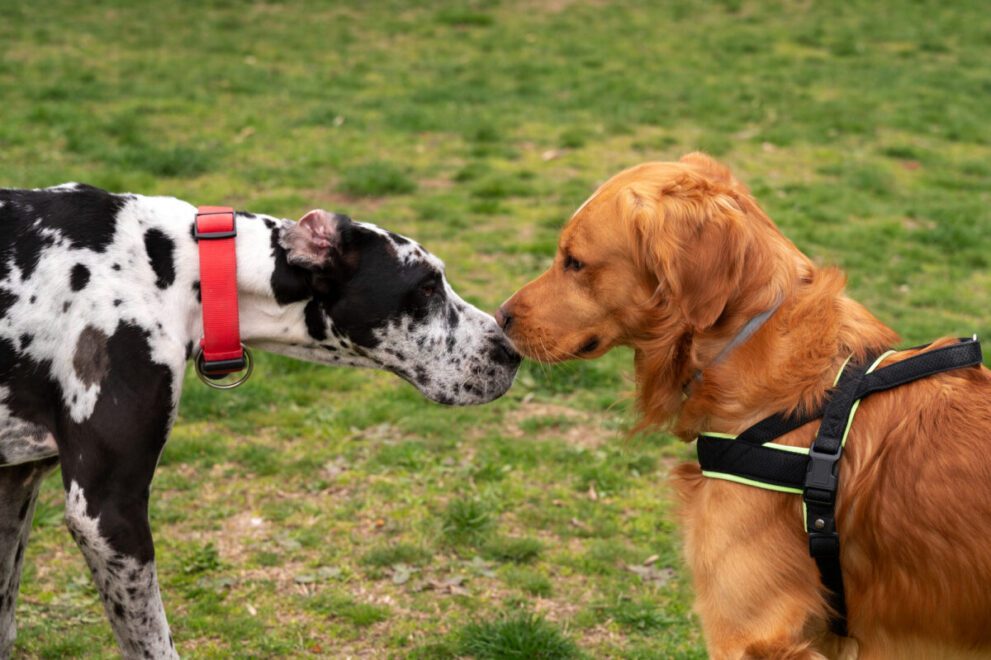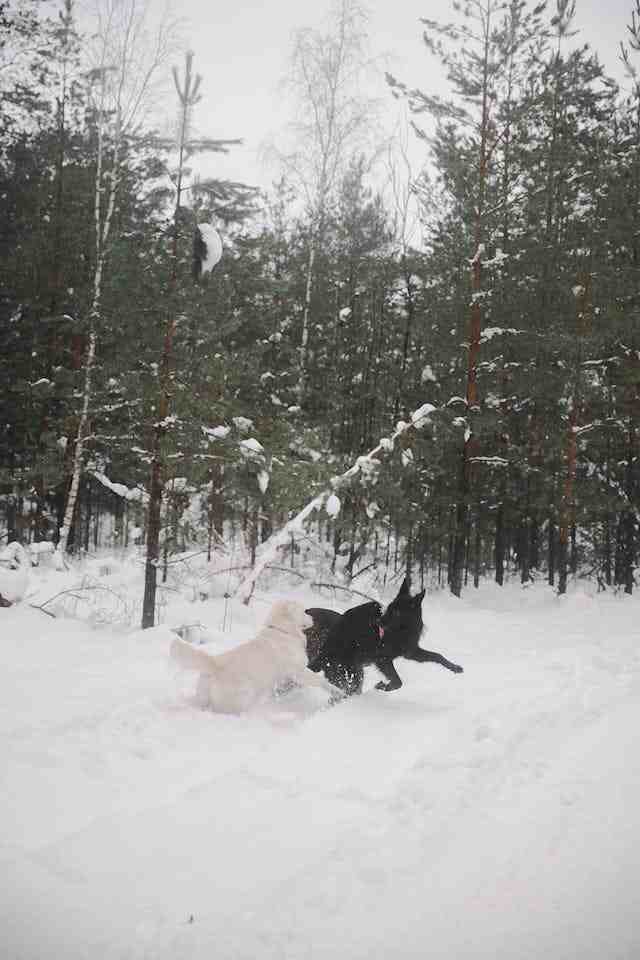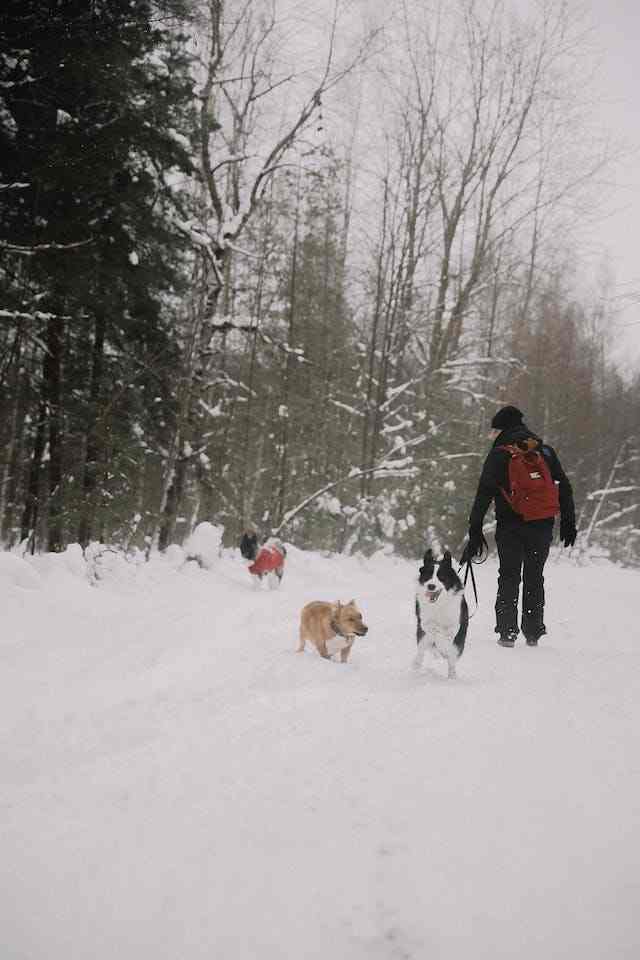
Exploring the world of dogs is like trying to make sense of a jumble of feelings and behaviors. One of the most interesting things about dogs is that they often cry or whimper when they see their friends. This kind of emotional response brings up a lot of questions, which in turn brings us to the world of dog communication. In this article, we will explore not only the reasons Why Your Dog Cries When Seeing Other Dogs? but we will also provide some practical tips on how to deal with and understand this special kind of behavior.
Table of Contents
Why Your Dog Cries When Seeing Other Dogs?
Comprehending Dog Interaction:
In order to understand why your dog howls when it sees other dogs, it’s critical to understand the complex language used by dogs to communicate. Dogs use a wide range of cues, including body language, vocalizations, and smells, to express the thoughts and emotions they are experiencing. Together, we will explore the intricacies of dog communication in order to obtain a deeper understanding of the elements that contribute to your dog’s emotional interactions with other dogs.
Dogs Are Social Beings:
Dogs are gregarious animals with a strong pack mentality by nature. This intrinsic social nature of dogs endures in our domesticated environments as well, driving them to seek out interactions with other dogs of the same breed for support, companionship, and shared experiences. Your dog may be expressing enthusiasm or a desire to interact with a fellow dog, a behavior that may have evolutionary roots, when it cries upon seeing another dog.
Excessive Stimulation and Excitation:
Dogs are susceptible to overstimulation in social situations, just like humans are. Just having another dog around might cause anxiety to spike and lead to an emotional meltdown. This emotional outburst can appear as sobbing or whining, particularly in breeds with strong energy and outgoing personalities. Acknowledging that your dog’s tears could be associated with joy is crucial for dealing with and controlling this behavior.
Uncertainty and Anxiety:
On the other hand, because of fear or insecurity, some dogs may weep when they are with other dogs. This is especially common in dogs that have never been around other animals or who have had bad encounters in the past. The sobbing may be an attempt to convey discomfort in a strange environment or a statement of anxiety or dread. Fostering a sense of security in your pet requires recognizing and treating these underlying emotions.
Geographical Sensations:

Dogs have strong territorial instincts, and they may get defensive when they come across another dog. Your dog may cry to indicate its territory or to show that it is in charge. Understanding how territorial instincts influence your dog’s behavior might help you understand why your dog cries, especially when it happens in particular situations or places. Positive reward combined with organized instruction can help control this tendency.
Lack of socialization: Proper socialization during your dog’s training months is essential to developing a well-adjusted and emotionally stable animal. If a dog is not exposed to enough other dogs during this important time, he may cry when faced with unfamiliar canine friends. By promoting socialization, trust is established and peers can establish positive relationships with the person, leading to healthier social interactions in the long run.
Dog communication styles: Dogs communicate using a variety of signals, including body language, vocalizations, and scent. Crying or whining may be part of this communication repertoire, indicating a variety of emotions such as excitement, tension, or a desire for social interaction. Understanding the complexities of dog communication is essential to accurately interpreting dog behavior.
Hormonal influences: Hormones play an important role in dog behavior and changes in hormone levels can influence their emotional responses. For example, intact male dogs may cry or whine more when they sense the presence of a female in heat. Likewise, hormonal changes in female dogs during their heat cycle can affect their interactions with other dogs. Recognizing these hormonal influences will provide more insight into your dog’s crying behavior.
Age and life stages: A dog’s age and life stage can influence its social behavior. For example, puppies may cry or whine when meeting other dogs as part of the learning and socialization process. On the other hand, older dogs may exhibit crying behavior in response to changes in their health or sensory perception. Considering your dog’s age and life stage is essential to understanding their emotional reactions to other dogs.
Genetic predisposition:

Some breeds have been selectively bred for specific traits, including social behaviors.
While some breeds are outgoing and sociable by nature, others may be more reserved or territorial. Understanding your dog’s breed characteristics and genetic predispositions can provide valuable information about your dog’s reactions when meeting other dogs.
Health considerations: Physical discomfort or pain may contribute to behavioral changes, including crying or whining. If your dog’s crying seems sudden or unusual, it is essential to rule out any underlying health problems. Feelings of pain or discomfort can make your dog more reactive to his surroundings, including the presence of other dogs.
Behavioral reinforcement: Dogs learn through positive and negative reinforcement. If your dog has learned that crying or whining will attract attention, treats, or access to other dogs, he may persist in this behavior to achieve these results. Recognizing and modifying these types of reinforcement is important to combat persistent crying behavior.
Environmental factors:

Environmental stimuli, such as noise, crowds, or unfamiliar surroundings, may contribute to a dog’s emotional state. Crying can be a response to feeling overwhelmed or overstimulated in particular environments. Paying attention to the environment when your dog exhibits this behavior can help identify potential triggers.
Problem Solving: Now that we have explored the potential reasons behind your dog’s crying, it is imperative that you address the problem to ensure your pet’s mental health and future.
Cooperates harmoniously with other dogs.
Gradual Exposure: If your dog seems overwhelmed or anxious around other dogs, consider gradual exposure in a controlled environment. Controlled introductions to new canine friends, along with positive experiences, can help build your dog’s confidence and reduce crying over time.
Professional Training: Seeking help from a professional dog trainer is a prudent step, especially if your dog’s crying stems from behavioral or anxiety problems. Professional trainers can offer valuable advice for modifying your dog’s behavior through structured training sessions and positive reinforcement tailored to your dog’s unique needs.
Positive Reinforcement: When your dog is calm and collected around other dogs, encourage positive behavior by rewarding him. Treats, praise, and affection are effective ways to reinforce the idea that meeting other dogs is a positive and enjoyable experience. Consistency is the key to creating lasting behavioral change.
Identify triggers: Pay close attention to specific situations and triggers that cause your dog to cry. Understanding the root cause helps you deal with the underlying problem more effectively. For example, a dog that primarily cries when on a leash may be frustrated by restricted movement, highlighting the need for targeted intervention.
Conclusion:
In the complex and interesting world of dog behavior, there is no one-size-fits-all explanation for why your dog cries when he sees other dogs. Rather, it is a complex interplay of social, psychological, genetic, and environmental factors that influence a dog’s response. Your job as a responsible dog owner is to observe, understand, and respond to your dog’s needs in a way that promotes positive interactions and emotional well-being.
Spending time exploring different aspects of dog behavior will not only strengthen the bond between you and her four-legged friend, but will also improve your ability to create a supportive and enriching environment .By responding to your dog’s crying behavior with empathy, patience, and a willingness to adapt your strategy, you’re going beyond simply addressing the superficial behavior. You will positively contribute to your dog’s overall well-being and mental health.
Remember that every dog is an individual with their own unique personality and experiences. What works for one dog may not necessarily work for another dog. Therefore, a holistic approach that takes into account a dog’s unique characteristics, history, and environment is most effective in solving the mystery behind why dogs cry when they see other dogs. By doing so, you will not only develop a deeper understanding of your furry friend, but you will also create a harmonious and fulfilling companionship that will last a lifetime.
Q: Why does my dog cry when it sees other dogs?
A: Dogs may cry due to excitement, overstimulation, anxiety, or territorial instincts. Understanding your dog’s unique triggers is essential for addressing this behavior.
Q: Can lack of socialization cause my dog to cry around other dogs?
A: Yes, insufficient socialization during a dog’s early months can lead to anxiety and insecurity, resulting in crying when faced with unfamiliar canine companions.
Q: How can I help my dog overcome crying during introductions?
A: Gradual exposure in controlled environments, positive reinforcement, and seeking professional training can aid in building your dog’s confidence and reducing crying behavior.
